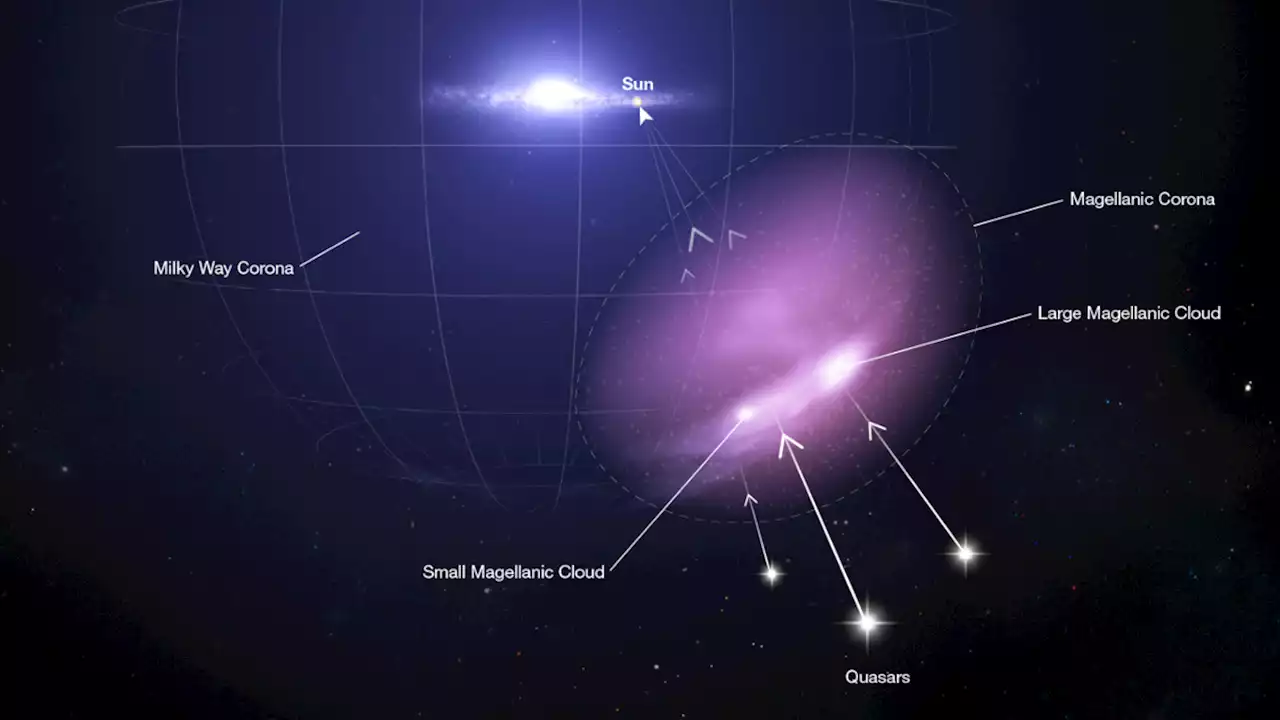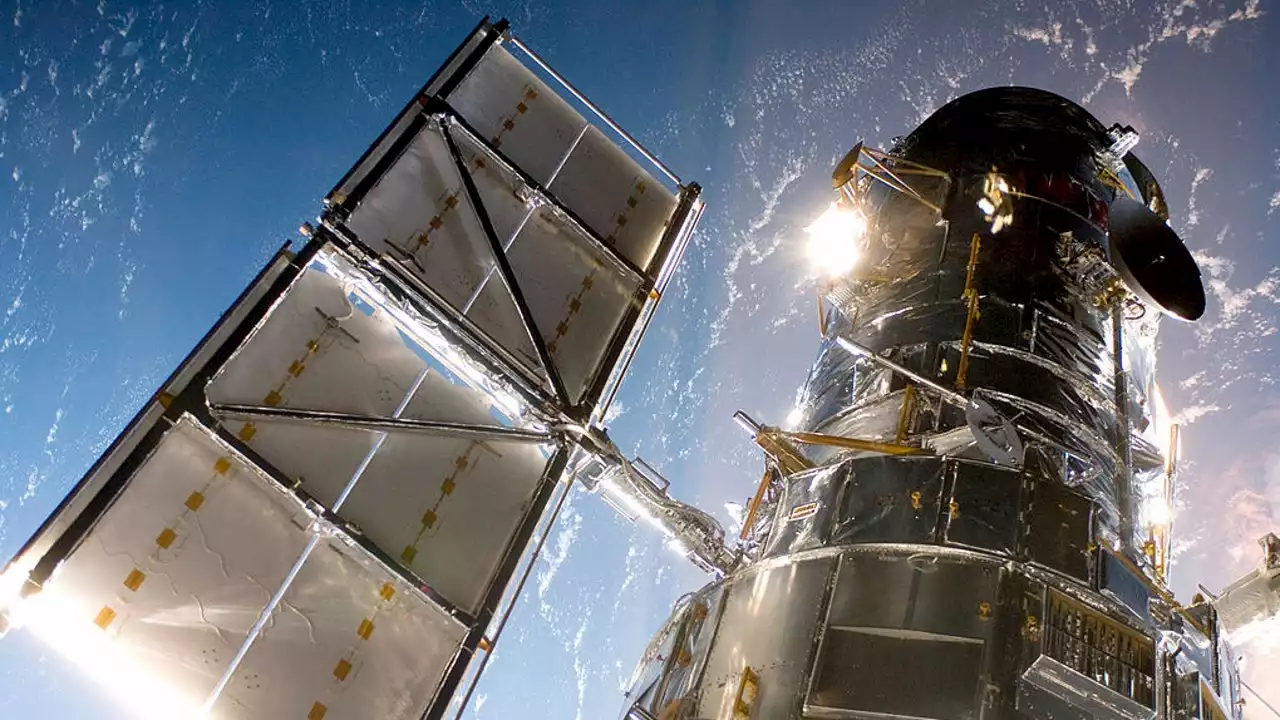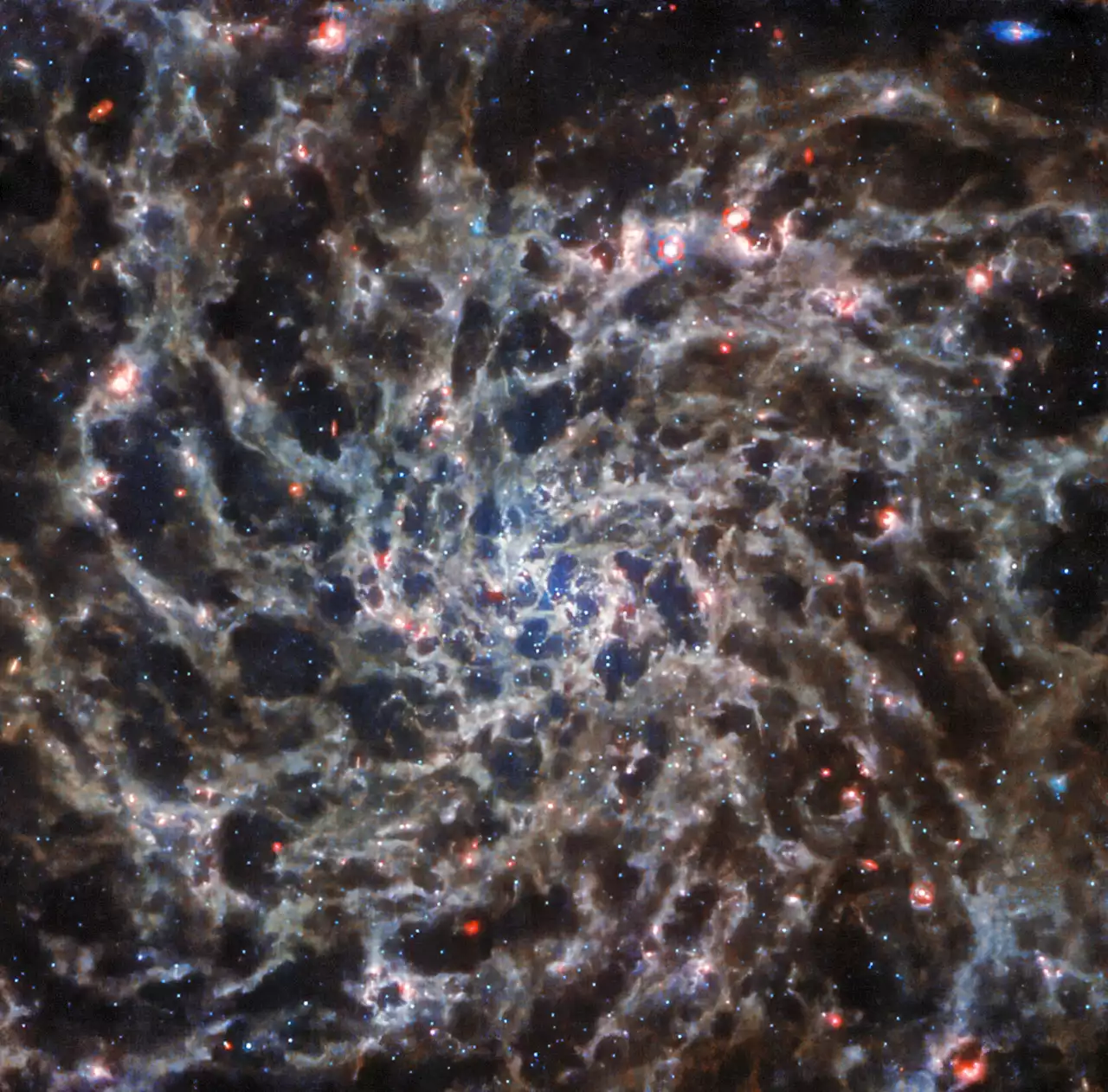The Hubble and James Webb telescopes are both powerful tools for peering out into the cosmos, but the way they view the universe is quite different.
The Hubble Space Telescope and the James Webb Space Telescope are both powerful tools for peering out into the cosmos, but the way they view the universe is quite different. While Hubble primarily looks in the visible light wavelength in the same range as the human eye, Webb looks in the infrared range which is beyond human vision. Looking at the same object in different wavelengths reveals different features, as a recently released pair of image demonstrates.
Webb and Hubble both imaged the spiral galaxy IC 5332, located over 29 million light-years away. Though this galaxy is only about one-third of the size of the Milky Way, it makes a great target for astronomy because the spiral is almost perfectly face-on from our point of view. The image captured by Webb’s ultra-cool MIRI instrument shows the skeletal-like structure of the galaxy’s spiral arms.
Compare this image to an image taken by Hubble, which shows dust as dark patches blocking out light through the spiral arms. On the ESA Webb website there is a slider which lets you compare the two images directly and see the similarities and differences that they observe when looking at the same galaxy.
The reason the galaxy looks so different in visible light versus infrared is to do with the dust spread throughout it, as the European Space Agency explains: “Ultraviolet and visible light are far more prone to being scattered by interstellar dust than infrared light. Therefore dusty regions can be identified easily in the Hubble image as the darker regions that much of the galaxy’s ultraviolet and visible light has not been able to travel through.
United States Latest News, United States Headlines
Similar News:You can also read news stories similar to this one that we have collected from other news sources.
 DART Impact Seen by Hubble and WebbWhen DART smacked into asteroid Dimorphos, telescopes on and off Earth saw it. Both Hubble and JWST took exquisite images and data.
DART Impact Seen by Hubble and WebbWhen DART smacked into asteroid Dimorphos, telescopes on and off Earth saw it. Both Hubble and JWST took exquisite images and data.
Read more »
 Hubble Space Telescope spots protective shield against greedy Milky WayThe Milky Way is trying to rip its neighbors apart.
Hubble Space Telescope spots protective shield against greedy Milky WayThe Milky Way is trying to rip its neighbors apart.
Read more »
 NASA and SpaceX Will Study Low-Cost Plan to Give Hubble a BoostNASA and SpaceX say they'll study a plan to reboost the Hubble Space Telescope to a more sustainable orbit, at little or no cost to NASA.
NASA and SpaceX Will Study Low-Cost Plan to Give Hubble a BoostNASA and SpaceX say they'll study a plan to reboost the Hubble Space Telescope to a more sustainable orbit, at little or no cost to NASA.
Read more »
 NASA and SpaceX explore using Dragon to send Hubble back to its initial positionHubble is in a good state at the moment but its orbit has been derailed a little over the past 33 years due to atmospheric drag. A SpaceX Dragon mission could put the telescope back in its initial position giving it 15 to 20 more years of life.
NASA and SpaceX explore using Dragon to send Hubble back to its initial positionHubble is in a good state at the moment but its orbit has been derailed a little over the past 33 years due to atmospheric drag. A SpaceX Dragon mission could put the telescope back in its initial position giving it 15 to 20 more years of life.
Read more »
 NASA, SpaceX to study feasibility of boosting beleaguered Hubble Space Telescope into higher orbitThe revolutionary telescope has lost 20 miles in altitude in the last 13 years and could eventually fall out of orbit.
NASA, SpaceX to study feasibility of boosting beleaguered Hubble Space Telescope into higher orbitThe revolutionary telescope has lost 20 miles in altitude in the last 13 years and could eventually fall out of orbit.
Read more »
 Hubble Space Telescope Detects Protective Shield Defending a Pair of Dwarf GalaxiesResearchers confirm the existence of the elusive Magellanic Corona, a protective halo of hot, ionized gas previously known only in theory. For billions of years, the Milky Way’s most massive cosmic companions – the Large and Small Magellanic Clouds – have been on a tumultuous journey through space,
Hubble Space Telescope Detects Protective Shield Defending a Pair of Dwarf GalaxiesResearchers confirm the existence of the elusive Magellanic Corona, a protective halo of hot, ionized gas previously known only in theory. For billions of years, the Milky Way’s most massive cosmic companions – the Large and Small Magellanic Clouds – have been on a tumultuous journey through space,
Read more »
